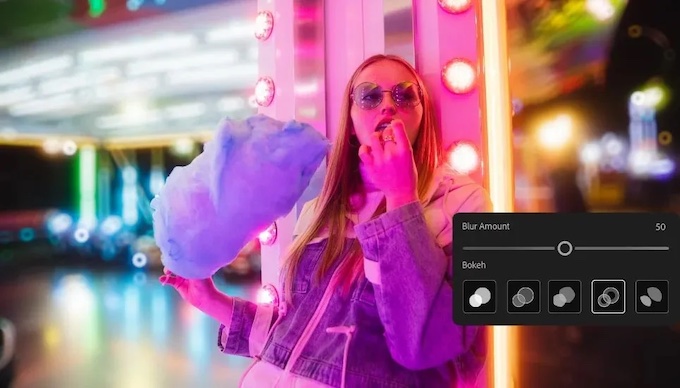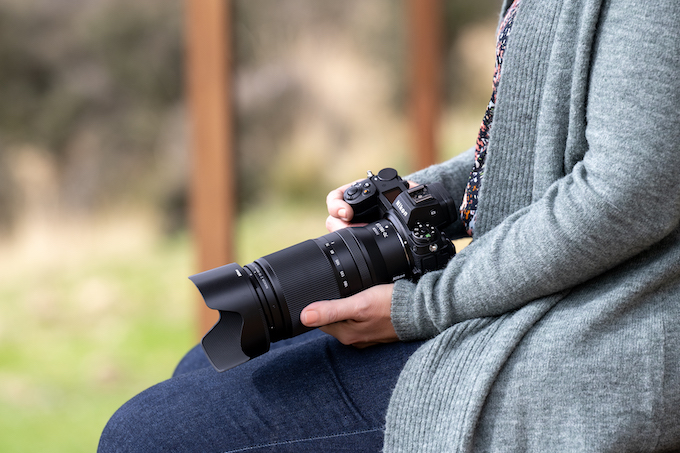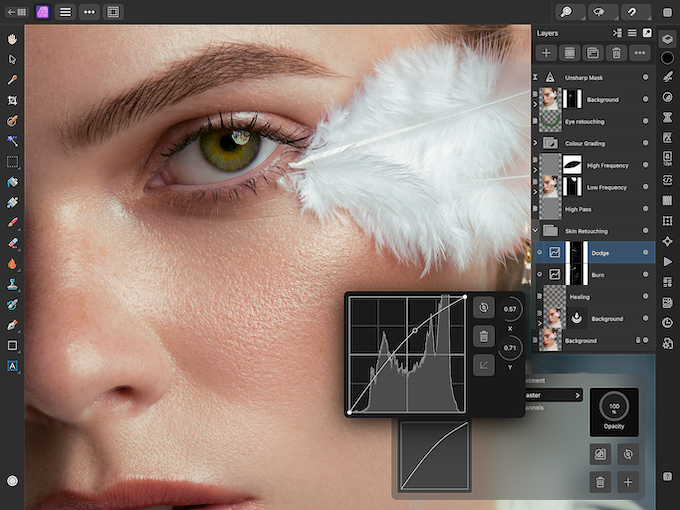Software
Capture One 21 Review: Speed Edits, Learn Button & More
January 8, 2021
In addition to Speed Edit enhancements and a new Learn button, Capture One 21 has new ProStandard camera profiles. Available for raw format files from select camera models (my Nikon Z 6 is one), the ProStandard camera profiles prevent unwanted color shifts when you make adjustments to images. Here, Capture One 21 adjustments to exposure, tone and contrast with the ProStandard Nikon Z 6 profile showed no change in the model’s skin tone.
One reason many photographers have chosen to use Capture One over the last 25 years is for the software program’s own unique camera profiles for each new camera, ensuring the highest quality RAW processing with real-world photographic situations. Recently, Capture One added full-featured image importing, cataloging, editing and exporting. It remains the top program for tethered capture both in the studio and on location. The software continues to evolve and my Capture One 21 review below features several innovations and overall speed improvements that are worth noting, including Speed Edits and a new Learn button.
[Read: Capture One Pro 20 Updates: Color Editor, Improved HDR]
As for pricing, Capture One 21 will cost $299 for new users. That price now includes activations on three computers. Existing users of Capture One Pro can upgrade starting at $159. There is also a subscription license for $20/month. There are separate versions of Capture One 21 for Nikon, Sony and Fujifilm cameras with a perpetual license for $129, and subscription versions of these are $9.99/month. The 30-day trial version is also a part of the installer and is registered as a full version when activated.
Editor’s Note: Capture One will be increasing its prices on the following products on January 11, 2021—Capture One for Fujifilm, Capture One for Sony and Capture One for Nikon—to bring them in line with Capture One Pro. The company is also increasing activations to two per license for these products. Existing subscription plans will not be affected by these changes. Customers can still purchase their preferred product or upgrade at the 2020 price before January 11.
[Read: Capture One Pro 20 Updates—Healing and Cloning Tools]
Capture One 21 Features: What’s New?
Sometimes, the most useful innovations can be the subtlest. Several of these are found in Capture One 21 Pro.
The new Speed Edit set of keyboard shortcuts could totally revolutionize your editing workflow. The prebuilt set of user-customizable keyboard shortcuts allows you to press and hold a key and scroll, drag or use the arrow keys to increase or decrease the amount of adjustment on many editing tools. No longer is there any need to select a slider and drag a cursor across it while trying to watch the change in the preview window.
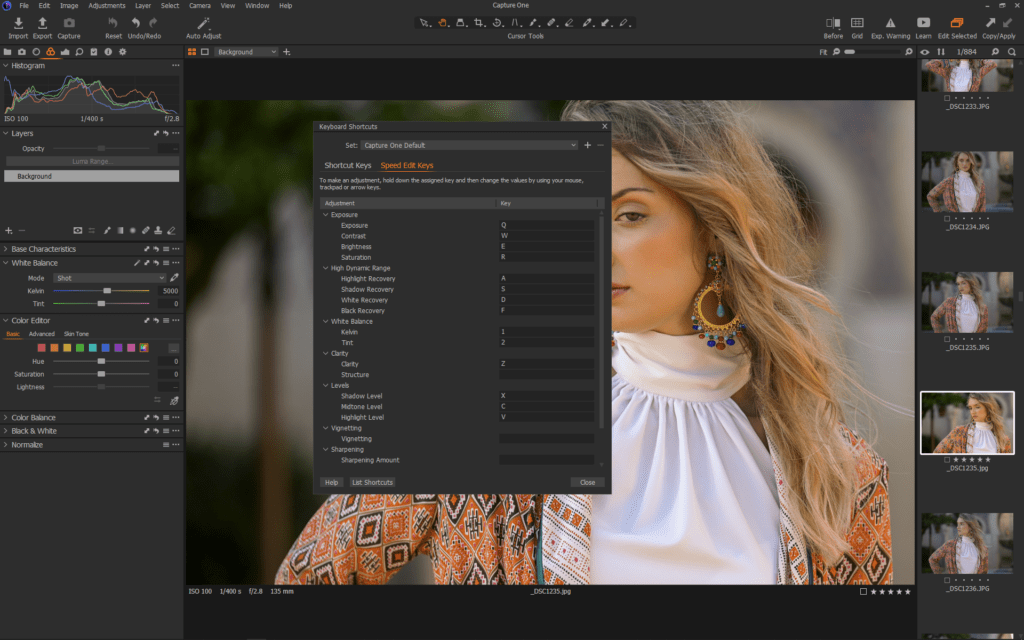
Another subtle innovation in Capture One 21 is the new ProStandard camera profiles. Available for RAW format files from select camera models (my Nikon Z 6 is one), the ProStandard camera profiles prevent unwanted color shifts when you make adjustments to images. They should be particularly useful to portrait, fashion and commercial photographers where color accuracy is essential.
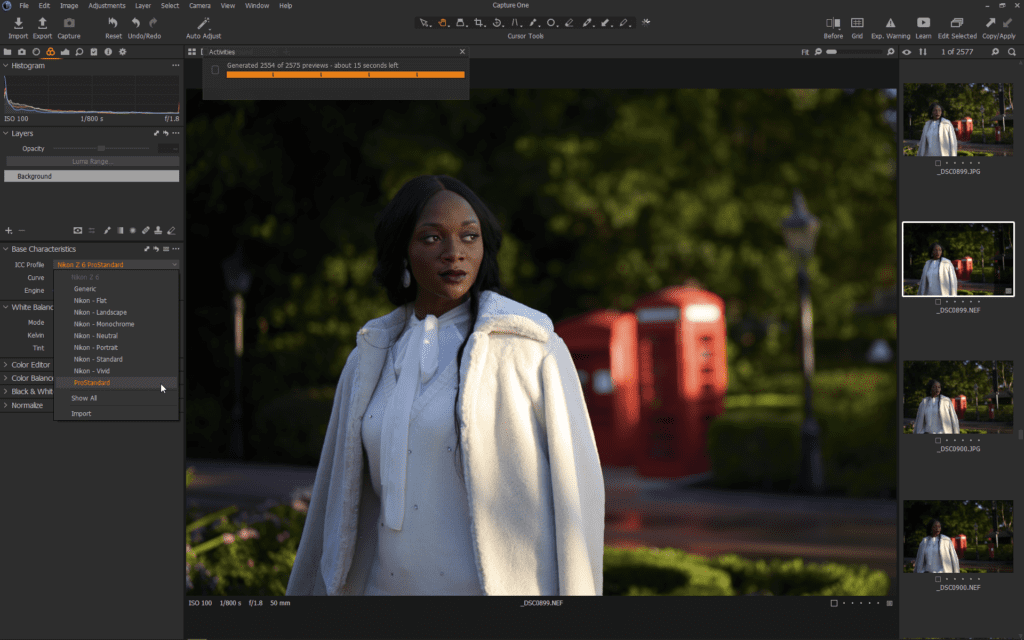
Less subtle but even more useful is the new Dehaze tool. New algorithms developed by Capture One automatically adjust contrast, saturation and a matrix of other parameters to remove haze and reveal underlying image information. What sets the Capture One Dehaze tool apart from many others is its ability to automatically detect the shadow tone during the slider adjustment. If the shadow tone automatically chosen isn’t what you like, an eyedropper allows you to select another dark tone in the image. In this way, you can warm or cool the image based on the shadow tone with obvious visible results.
Speed improvements also caught my eye. While most new releases from any software company usually touts improved speed, most times this is hard to judge. That’s not so with this version of Capture One. I noticed it most when importing images, but everything from searching and browsing to emptying the trash is faster too. Learning is enhanced with a new Learn button that takes you to tutorials and online learning tools.
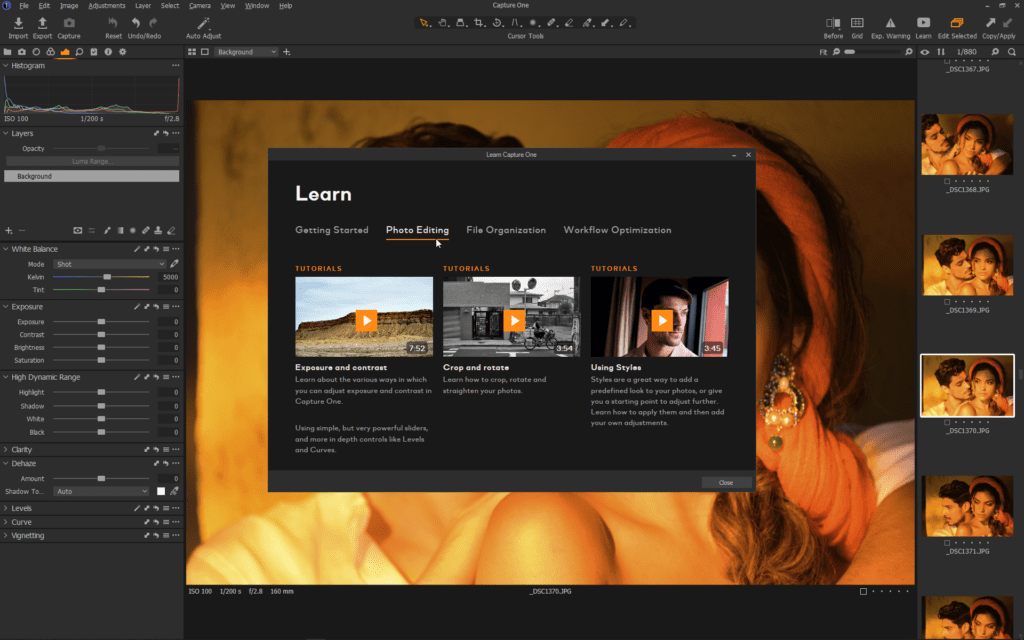
video tutorials.
Finally, for Leica camera users, Capture One 21 Pro introduces tethered capture and its own reverse-engineered camera profiles for newer Leica models.
Navigability in an Icon-Based Workflow
The success of Capture One in the marketplace is due to its technological innovations and their unique approach to imaging processing and workflow. This has led them to follow the lead of Adobe systems as most other imaging software companies have. The result is a carefully thought-out set of tools arranged in a logical icon-based workflow unlike that of any other imaging program. For new users and even existing users who are upgrading but not paying attention to the “What’s New” in the opening splash screen, the program can seem somewhat user-unfriendly. The interface and workflow are highly configurable once you are comfortable with the program.
Capture One has long made available help and tutorials for users. Now, after 25 years, the new “Learn” icon in the toolbar makes a huge effort to help new and upgrading users to master the program. I have reviewed many versions of Capture One through the years, used it exclusively when I had a Phase One digital back, and I still found myself clicking the Learn button to refresh myself on new and old features. While it takes some effort to get the most out of Capture One, it takes less effort than in the past. And when you see the results, the effort is well worth it. The enhanced tooltips are helpful also.
What Works Well In Capture One 21
As a firm believer in keyboard shortcuts, I love the new Speed Edits. I can’t wait to customize them to my own easier-to-remember set (“E” rather than “Q” for exposure, “C” rather than “W” for contrast, etc.). Anything that allows me to work while concentrating on the preview image while I swipe my mouse across it to make an adjustment rather than trying to keep my mouse on a slider to make an adjustment is welcome.
The new Dehaze tool, with its manual shadow tone option, is a tool I didn’t know I wanted until Capture One introduced it. By picking different shadow areas you can subtly (or not so subtly) adjust the image tonality quickly and easily. With more time I hope to become more adept in its use, or maybe I’ll just accept the automatic adjustment that Capture One makes, as I ended up going back to “Auto” most of the time after playing around with the manual adjustment.
I’ll need more time with Capture One 21 and my Nikon Z 6 to properly evaluate the new ProStandard camera profile. It seems to do what it should, but without some really critical color images, it’s difficult to evaluate for sure. While using this feature with my Z 6 images, the ProStandard profile didn’t look any different initially than the Z 6 generic profile, but skin tones did seem to remain accurate after making tonal changes to images.


But there is no doubt that the speed improvements are real. Even while exporting images for this article, the process seemed nearly instantaneous rather than merely “fast” as it was in previous versions. And I’ve already mentioned that the new Learn feature is a winner.
What Doesn’t Work
I found nothing in the new features to criticize other than the lack of anything really ground-shaking. Subtle innovations and improvements are always welcome, but I would hope for more in an entirely new version. My criticisms from previous versions that have fallen on deaf Capture One ears involves the inability to add comprehensive EXIF information when importing images rather than late in the process, and having to copy and paste it into all images, the minimally usable spot removal tool, and the inability to easily remove unwanted elements in an image. My personal nitpicking list.
How Capture One 21 Compares to Other Editing Programs
Capture One has long been the image-processing program of choice for studio photographers, both portrait and still-life, who shoot in RAW format with their camera tethered to their computer. It has all the tools needed, including the ability to have others in the studio watch the progress of the shoot on their phones or laptops, to deliver the highest quality final images. Other programs have more complete portrait retouching tools, a less daunting interface, stronger image enlargement algorithms, stronger image composition tools, etc. But other than the clunky Nikon software, I have yet to find an image-enhancement program in the last 25 years that delivers a better RAW file conversion from Nikon digital camera files than Capture One.
Read more of Stan Sholik’s most recent software reviews here.


